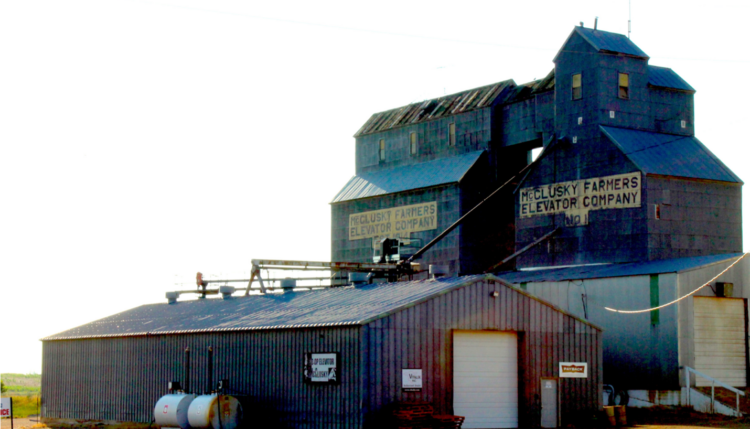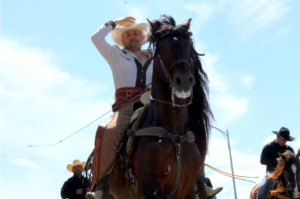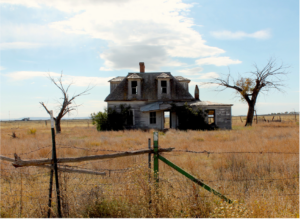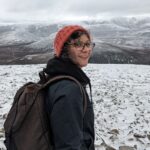
From the Archives: Dispatches from Centerville, USA
A journalist seeks out the heart(s) of America.
We were supposed to be better than this.
That thought kept running through my head after the 2016 election. I simply couldn’t believe that the country I was born and raised in, the country that took in my Venezuelan immigrant mother, was really as angry, as caustic, as willfully ignorant, as we were being shown it was.
So in April 2017, I quit my dream job writing about TV at Variety and left New York, my home of nine years.
I set out to talk to “Real Americans” like those I had grown up with in central Florida, to find out what was really ailing America, and figure out how to fix it. I wasn’t going to do the Chris Arnade thing, or the J.D. Vance thing—stories which, although worth telling, I saw as merely parts of a whole. These stories are also being told by the same kind of person we always hear from: white and male.
I would offer a different perspective: that of a small, young, dark-complected woman—”vaguely ethnic” according to most observers, a range from “Jewish” to “Latina”—who simply talked to whoever happened to be around; speaking to as many people as I could, in each of America’s 50 states.
So I spent seven months going from state to state, all 50 of them (yes, including Hawaii and Alaska). More specifically, I went to the cities and towns closest to the geographic center of each state, as indicated by a list published by the U.S. Geological Survey (USGS) sometime in the 1950s. I figured that this was a good way to get a mix of population centers like state capitals—Indianapolis, Columbus— as well as smaller cities or villages, and university towns.
I would talk to everyone I could in the town I was in. I went to bars and diners, coffee shops, churches, malls, museums, small businesses, and historical societies, conversing with at the very least some 400 people throughout the course of my travels.
While I always did some very basic research before getting to my next stop, I tried to approach each city with complete. openness. We are biased creatures though, and sometimes I would glide into town sure I would find only agricultural folk, or that I was likely to see the devastating effects of the opioid epidemic, or that I wasn’t like to meet too many openly progressive people. Sometimes, these basic preconceptions were challenged; just as often, though, they stood.
My approach with each individual I spoke to was much the same. Your initial impression of a person, before they even so much as open their mouth, is formed almost unconsciously based on what your eyes tell you, matching these observations to past experiences in your memory. In my approach, I never brought up politics in a given conversation—I allowed my conversation partner to do so. I tried to avoid using the words “conservative” or “liberal” whenever possible, gravitating towards specific proposed policies, like the repeal of the Affordable Care Act.
I went into this project thinking that, if given the opportunity not to shackle themselves to an ideology, Americans would show that their political beliefs were far more fluid, covering a broad range of opinions. I was wrong. Even with all the care I took to avoid caging people, I found that nearly everyone I talked to caged themselves.
Many of the cities in the centers of states are overwhelmingly white, which means that most of the people I spoke to in any given state were white. There were enough exceptions that this was not a monochromatic portrait of America, but, yes, it does skew heavily to the pale folk. I tried to elevate as many voices of color as possible within the entries.
I was constrained somewhat by budget, and by time. It became apparent very early on in this project that I simply wasn’t going to have time for any other freelance assignments, not with my duties of reporting, writing, photographing, and posting for Centerville. And so I had to depend on the largesse of my Patrons, a collection of 89 lovely people who gave me anywhere from $1 to $100 a month for the privilege of reading the essays. That meant doing this entire project on $900 or so a month, which was not exactly possible, and I went through a not-insignificant portion of my savings to make up for the shortfall.
Budget explains some of my haste, but there was another reason: I wanted to get a picture of America at this moment in time. The current pace of newsworthy events in our country had already long since passed “breakneck” when I started, and seemed to accelerate as I went from state to state. I didn’t know what cataclysmic event would render my previous reporting useless, and so I adopted a breakneck pace myself, finishing this project several months before I initially planned to.
For lodging, I used a combination of Couchsurfing—an app that connects you with people willing to host you for free, for the sheer love of meeting new, interesting people—Airbnb, friends-of-friends, and the occasional murder motel. When I couldn’t find affordable lodging in the city referenced by the USGS, I tried to stay as close to it as possible, and, with one exception, made an effort to spend at least a day in that city.
I spent three nights in most states, with the exceptions of two in North Dakota and Utah, and a few nights longer in Colorado as a break. I spent various spans of time in the first three states I went to, and came to the conclusion that the difference between spending three nights, or five, or six, in a particular place was negligible. You start to hear the same stories after a few days, and the same answers to basic questions. I figured on talking to anywhere between seven to a dozen individuals in this span of time. Sometimes I only managed to get five or six, and sometimes I was rewarded with up to 20 conversations.
One could argue that the only way to really get to know a town is to live there, or spend at least several months there. And I would agree. Unfortunately, that would mean devoting more than a decade of my life to this endeavor, and while that would certainly be a noble goal, it would also mean sacrificing any measure of timeliness. A nation can radically transform itself in a decade—look at Germany in the span of 1922 to 1932. Or look at our own country, from, say, 2006 to 2016.
For my own part, I feel as though I have experienced as much of the American experience as one can in such a short period of time. The goal was ostensibly to create a mosaic of America, to give a wide-ranging idea of the American experience in this moment in time. But there was another goal, sappier, more personal: I wanted to find America’s heart. I wanted to see what bound us together as a nation, to prove—mostly to myself—that a significant portion of our people do actually want to make this country better for everyone.
And I did encounter a good amount of generosity throughout the tens of thou-sands of miles I traveled. Unfortunately, it is all too easy to conflate generosity towards an individual with a generous spirit. Many who offered food or shelter would, with no prompting, begin grousing about handouts, about the intrinsic laziness of whole races or economic classes. They would bring up death as the only reasonable alternative to massive medical debt. “I shouldn’t have to foot the bill for someone else’s healthcare,” they’d say. For some, education is a privilege, rather than a right or a societal good. They’d advocate for locking addicts in prisons and throwing away the key, or sterilizing them, or just outright killing them.
This is not a hopeful story. But it is not entirely without hope. There were moments when I’d find what I was looking for; an interfaith gathering in Columbus, a roller derby tournament in Wisconsin to benefit domestic violence shelters, a Creole-Vietnamese-American family in Louisiana who invited me to stay with them for Thanksgiving. These moments are kept as a secret fire in my heart, guarding against total despair.
Because the inescapable fact is this: I went looking for America’s heart, and I found instead a gaping hole.
This essay was originally published in the Spring 2018 issue of Literary Journalism. You can read more about Oriana’s reporting trip in her New York Magazine piece here.
Oriana Schwindt is a screenwriter, journalist, and podcast host. In 2017, after a half-decade writing about television for publications like TV Guide and Variety, Oriana tried to figure out what had happened to America on a self-funded, seven-month reporting trip to the geographic center of every state. When book publishers said her material “wasn’t Eat, Pray, Love enough,” she began turning those stories about finding community into TV pilots and has now won both a coveted spot in the Warner Bros. Television Writers’ Workshop and the Blue Sky Screenwriting Contest.


